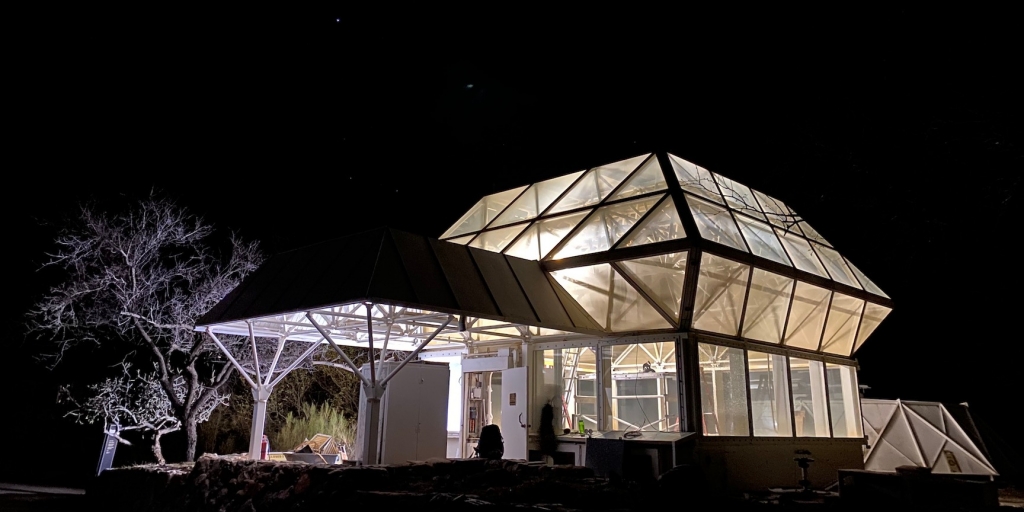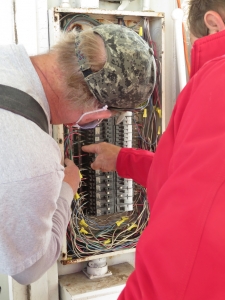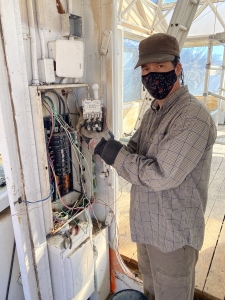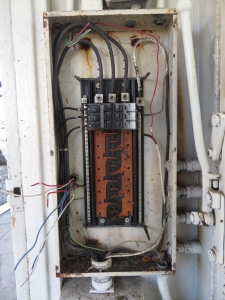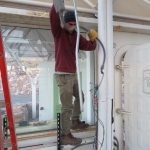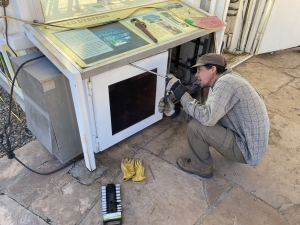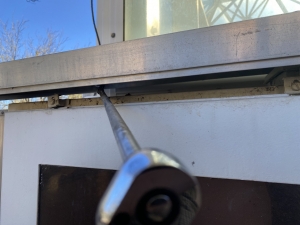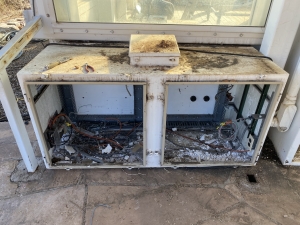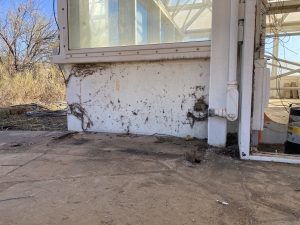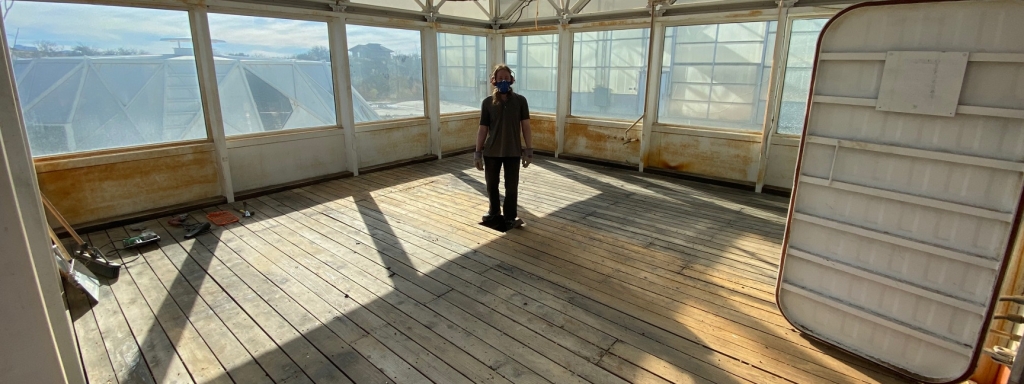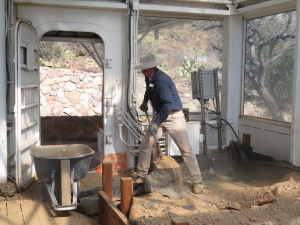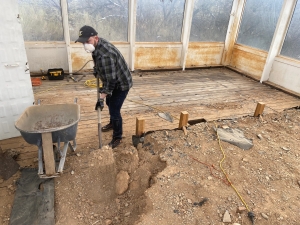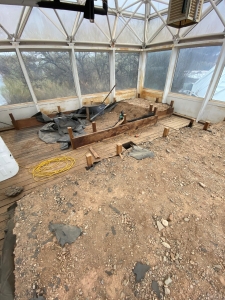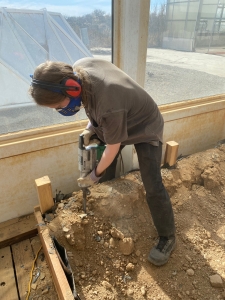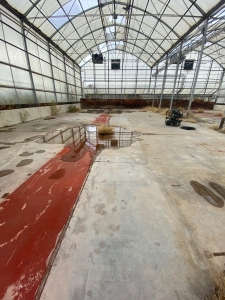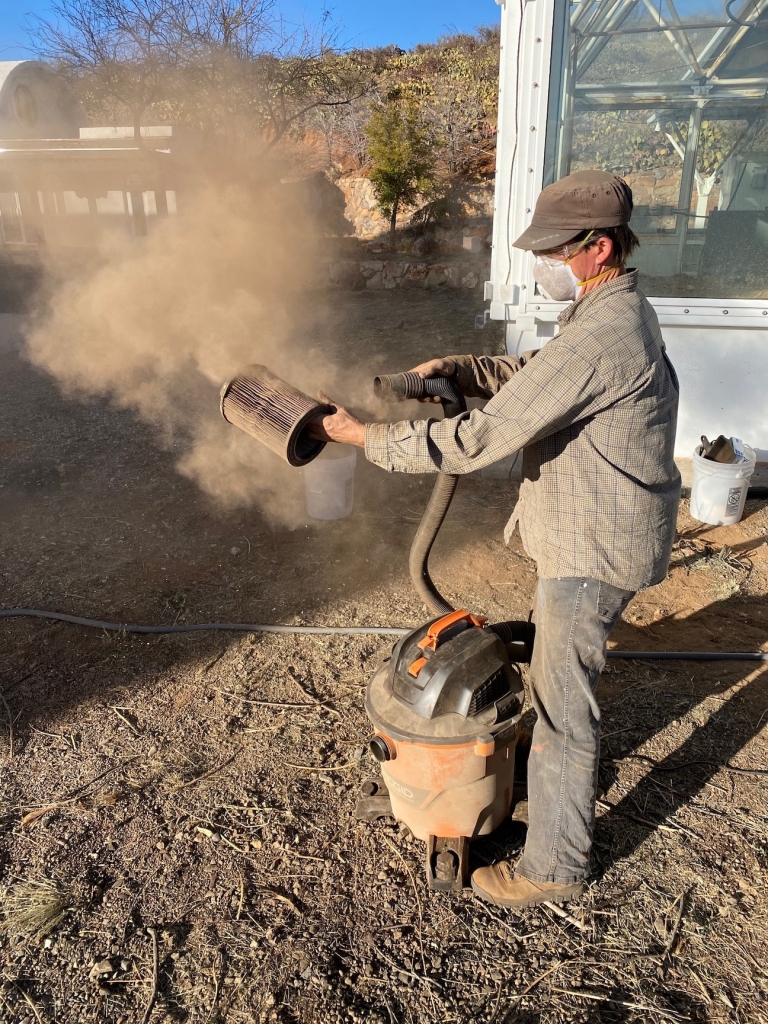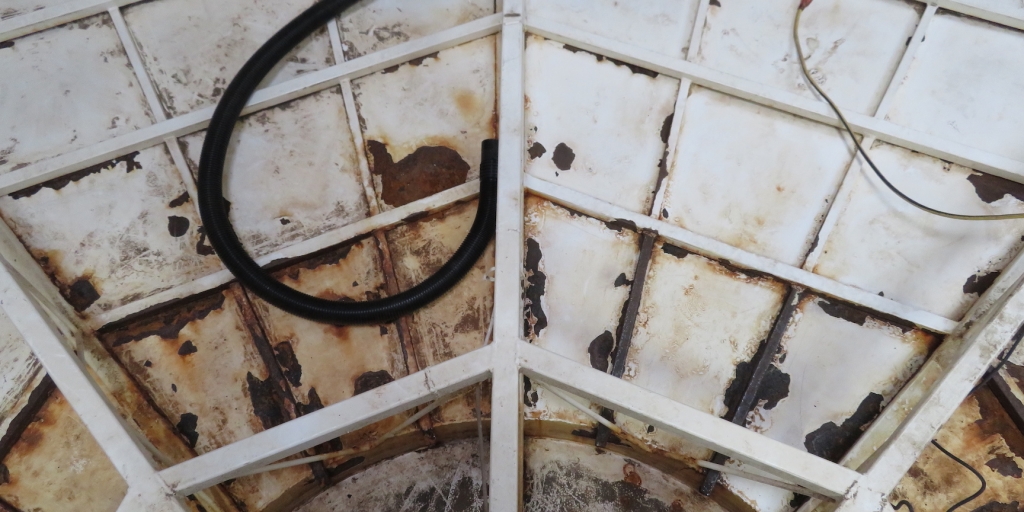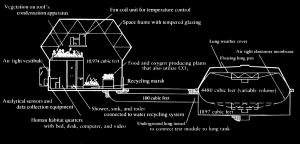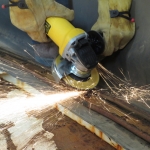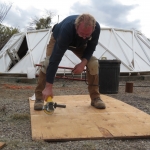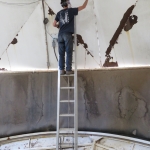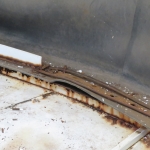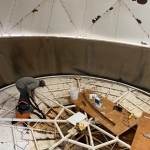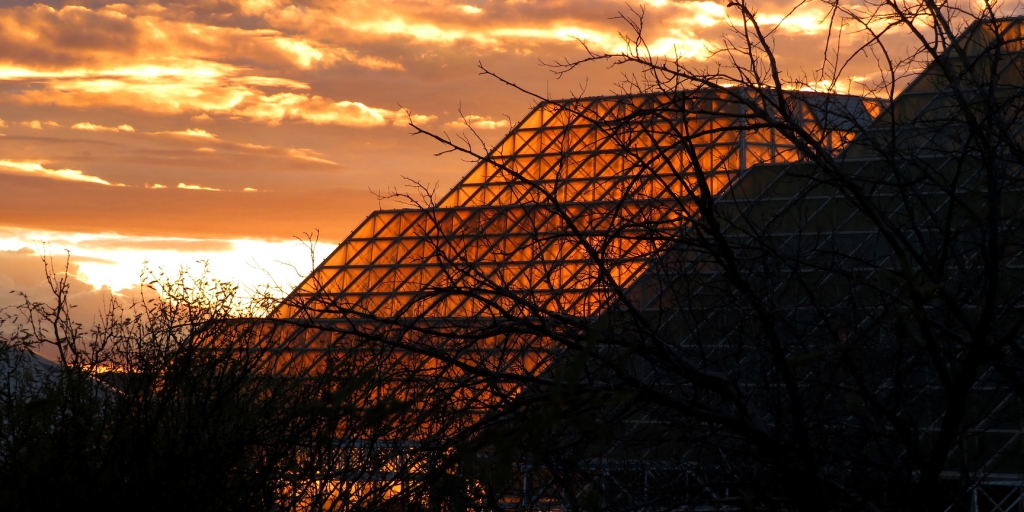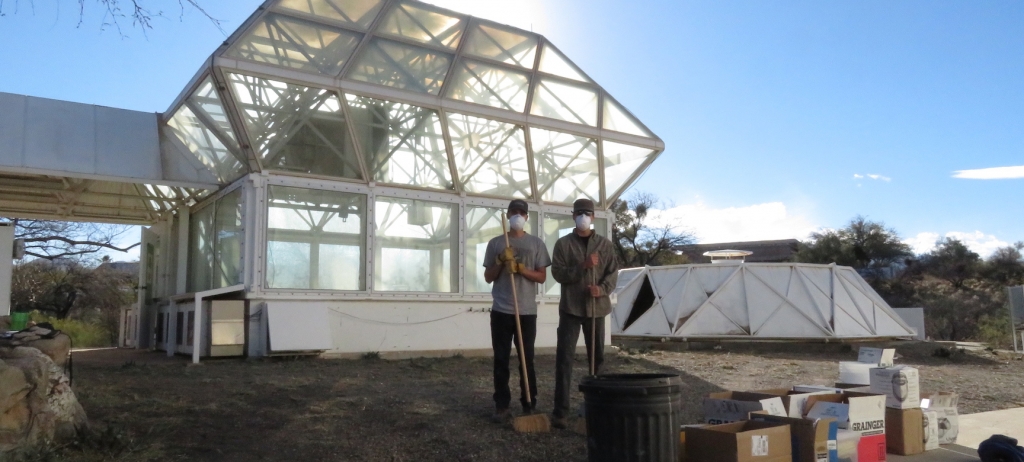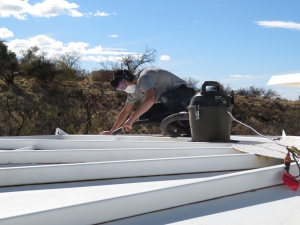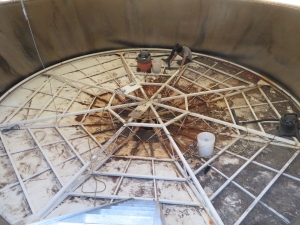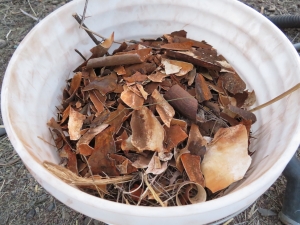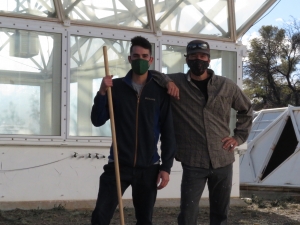SAM Construction – At the Close of Two Weeks
This second week of the rescue, refurbish, and reconstruction of the Test Module, what will soon be the greenhouse for SAM, has been wonderfully rewarding. Where our first week found us diving into what felt like an endless chasm of relentless cleaning, grinding, sanding — wondering how we would see the end of it — the past five days found us making good progress.
Doug, Tim, and Terry, veterans of Biosphere 2 for some three decades dove right in, with Trent and two UA graduate students Michael and KC applying jack hammer, shovel, and wheel barrow to the heavy, hard dirt. Trent, Tim, and KC worked at cleaning up our future Mars yard while another crew worked to carefully disassemble the old, massive heat exchanger in the upper reaches of the Test Module. The electrician Kevin spent a half day testing electrical circuits to determine where and how to power our revitalized greenhouse and crew quarters. Needless to say, thirty years of desert heat, occasional rains, and the teeth of mice and rats are not kind to wiring. Much of what exists will be pulled and re-run.
Sadly, I spent most of the week with fingers to the keyboard writing a grant proposal with Kevin Bovine, Director of Education and Outreach for Biosphere 2 while Trent and crew had all the fun — Kai Staats


